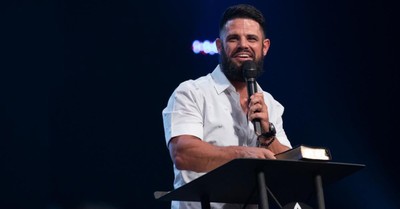
In recent years, it has become commonplace to hear people complain about the bias that exists in the news. We long for the days of seemingly objective reporters who simply tell us the news. Unfortunately, the days when that happened were short-lived, if they ever existed at all. For most of American history, newspapers were partisan in their origins. They existed to get across a particular point of view. The push for objectivity rose in the early 20th century and had started to fade by the end of it. Many young media members now reject the idea of objectivity, believing that it is important to advocate for certain causes.
As American news media runs away from the veneer of objectivity, we must sharpen our reading and watching skills so that we know how to spot the biases in our news sources. The idea is not that we throw our hands up and say that we will never know what is really going on. Instead, we read and listen with trained eyes and ears. This will help us not only to learn the truth about what is happening in our world, but it will also help us to better understand the mindsets of the people around us.
One question that we should ask as we read is, “who does this story portray as a villain, and who does it portray as the hero or the victim?” Or you could ask, “Who does the writer seem to be pulling for, and who does he seem to be rooting against?”
We see examples of this in the current coverage of the hostilities taking place between the Israelis and the Palestinians in Gaza. In a 2014 article for The Atlantic, Matti Friedman, a former Associated Press reporter, explains what the media gets wrong in covering the Israeli-Palestinian conflict. In speaking about the way many of the Westerners who come to Gaza, including reporters, view the conflict, he said, “In these circles, in my experience, a distaste for Israel has come to be something between an acceptable prejudice and a prerequisite for entry. I don’t mean a critical approach to Israeli policies or to the fam-fisted government currently in charge in this country, but a belief that to some extent, the Jews of Israel are a symbol of the world’s ills, particularly those connected to nationalism, militarism, colonialism, and racism.” He went on to say that “This sentiment is translated into editorial decisions made by individual reporters and editors covering Israel.”
As I was writing this, I pulled up the front page of The New York Times. One blurb under a headline says that “An Israeli attack overnight appeared to be the deadliest of the current hostilities, intensifying international pressure to find a diplomatic solution. Every picture of damage and destruction was from Gaza. There were no pictures or mentions on the front page of the mutual hostility coming from Gaza. For most of the American news media, Israel is the violent oppressor, and the Palestinians are the victims of their oppression. Understanding this simple fact helps you to read all news about this conflict with a more well-trained eye.
Another helpful question to ask is, “What debatable issues do they state as fact?” The debate over transgender girls participating in boy’s athletic events provides an instructive illustration of this principle. A March article on CNN explored two executive orders signed by South Dakota Governor Kristi Noem, which limited participation in women’s sports on the high school and college level to “females, based on their biological sex, as reflected on their birth certificate.” In the article, which criticized the executive orders, CNN writer Devan Cole stated that “It is not possible to know a person’s gender identity at birth, and there is no consensus criteria for assigning sex at birth.” Cole offered no evidence for this claim. He stated it as a readily accepted fact and moved along to make his point. (CNN has since changed the original article to read, “It’s not possible to know a person’s gender identity at birth, and for some people, the sex listed on their original birth certificate is a misleading way of describing the body they have.”
This article is but one example of many in which an author states a point and assumes its truthfulness without feeling the need to marshal any evidence. Every news publication does this on many issues. They don’t need to offer evidence that the sun rises in the east or that Albany is the capital of New York. However, on issues as controversial as gender identity, to make debatable statements as if they are settled fact tells us all that we need to know about the news organization’s commitments.
Bias in the news media is only going to grow more pronounced in the coming years. Rather than spending our time decrying it, we should learn how to spot it and how to learn from it. As followers of Jesus, understanding the bias of the world around us not only helps us better understand the news that we see each day, but it also helps us gain a better understanding of the people we are trying to reach.
Photo courtesy: ©Getty Images/Nodar Chernishev/EyeEm
Scott Slayton writes at “One Degree to Another.”










